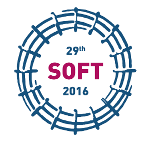Speaker
Masaru Nakamichi
(Sector of Fusion Research and Development)
Description
Hydrogen generation via an oxidation reaction of beryllium as an existing neutron multiplier with steam at high temperatures should be reduced on safety hazard for a fusion reactor. Therefore, advanced neutron multipliers with high stability at high temperatures are desirable for the fusion reactor in which water coolant is extensively used. Beryllium intermetallic compounds (beryllides) are one of promising materials. Fabrication methods of beryllides pebbles have been developed by combining a plasma sintering synthesis method and a rotating electrode granulation method.
In the case of Be12Ti, an annealing treatment is necessary to homogenize the pebbles to a single Be12Ti phase after granulation, because the composition changes via a peritectic reaction caused by remelting under granulation. Homogenized Be12Ti pebbles found out to have higher reactivity than as received pebbles because the homogenization treatment caused to an increased specific surface area of the pebbles. To prevent the increased surface area and lower the reactivity, accordingly, prototypic pebbles with Be12V that have no peritectic reaction during granulation process were successfully fabricated without homogenization. Then, the Be12V prototypic pebbles indicated to have a good oxidation resistance.
As a result of the reactivity with steam, it was clarified that BeO layer on the surface of Be12V pebbles acts as a protective barrier against hydrogen generation reaction. As the next stage, to investigate the effect of BeO layer as surface modification of beryllide on the reactivity, Be12V pebbles annealed in oxygen atmosphere were prepared as specimen. Using those surface-modified pebbles, hydrogen generation reaction experiments at 1273 K were repeated three times. Hydrogen generation rate of each experiments reduced to almost the same level as the background. From these results, surface-modified Be12V pebbles with no-hydrogen generation were successfully fabricated and developed.
Co-author
Masaru Nakamichi
(Sector of Fusion Research and Development, Japan Atomic Energy Agency, Rokkasho, Japan)

